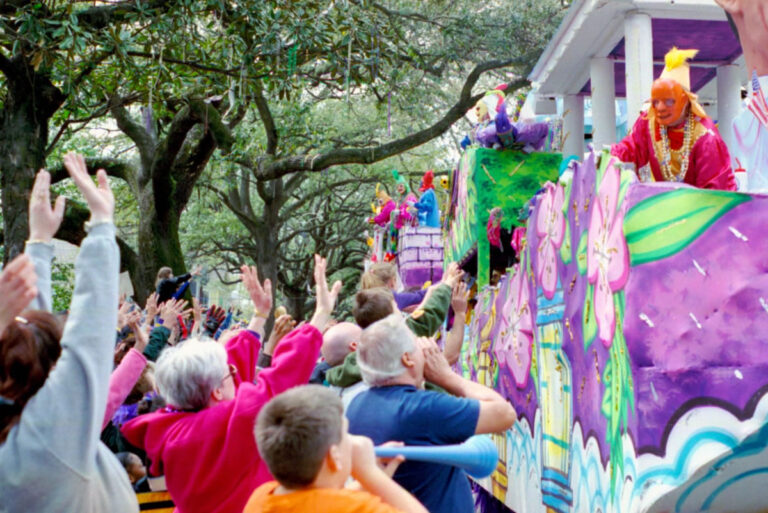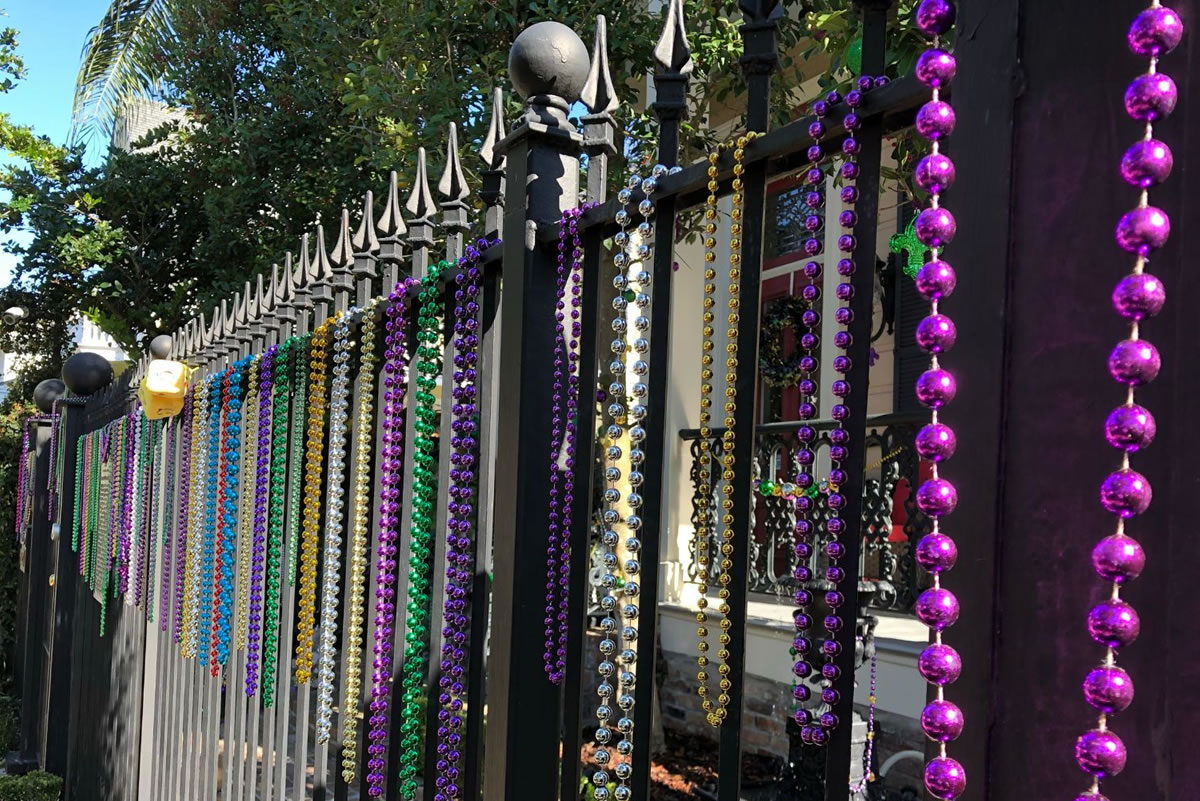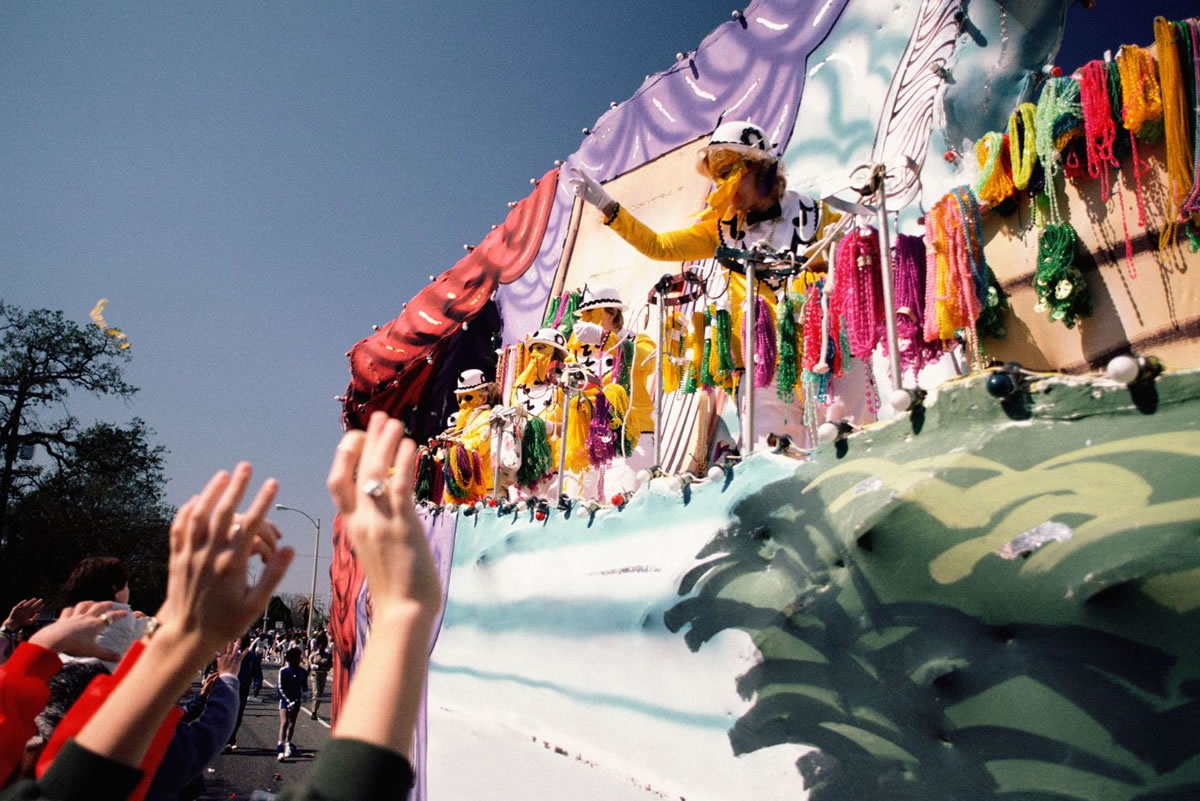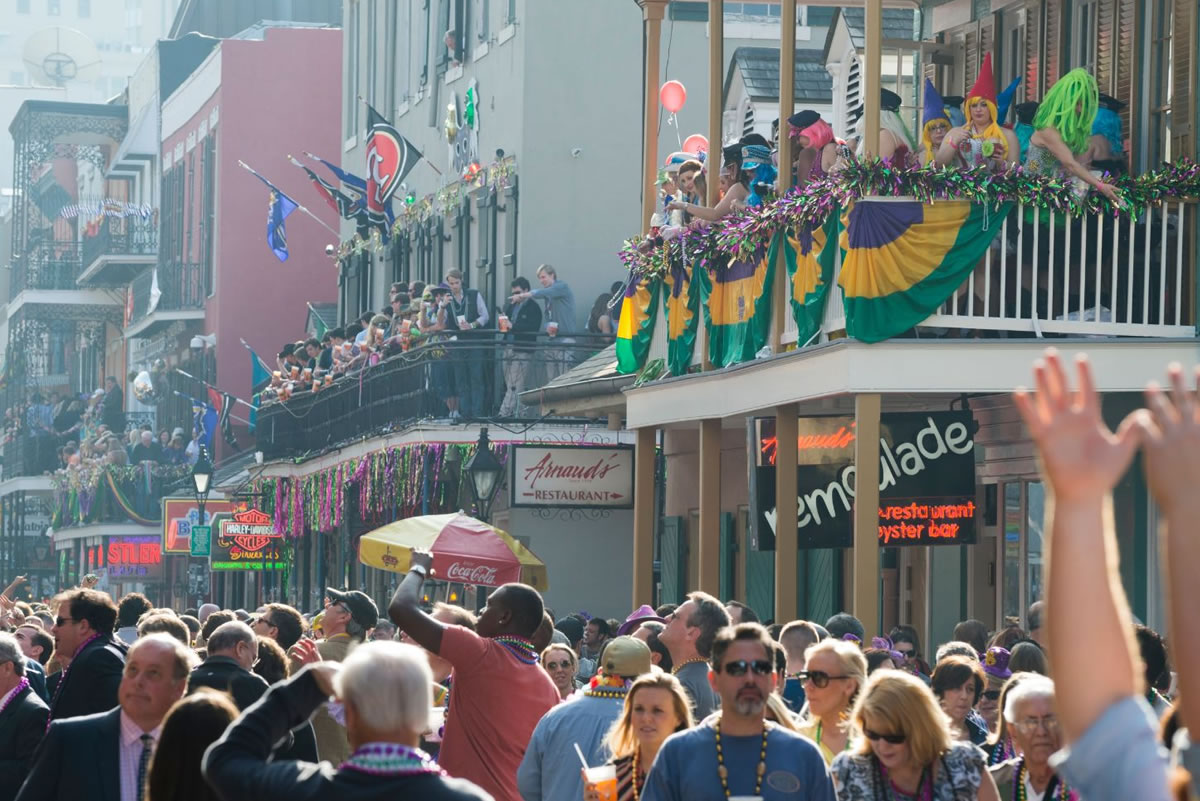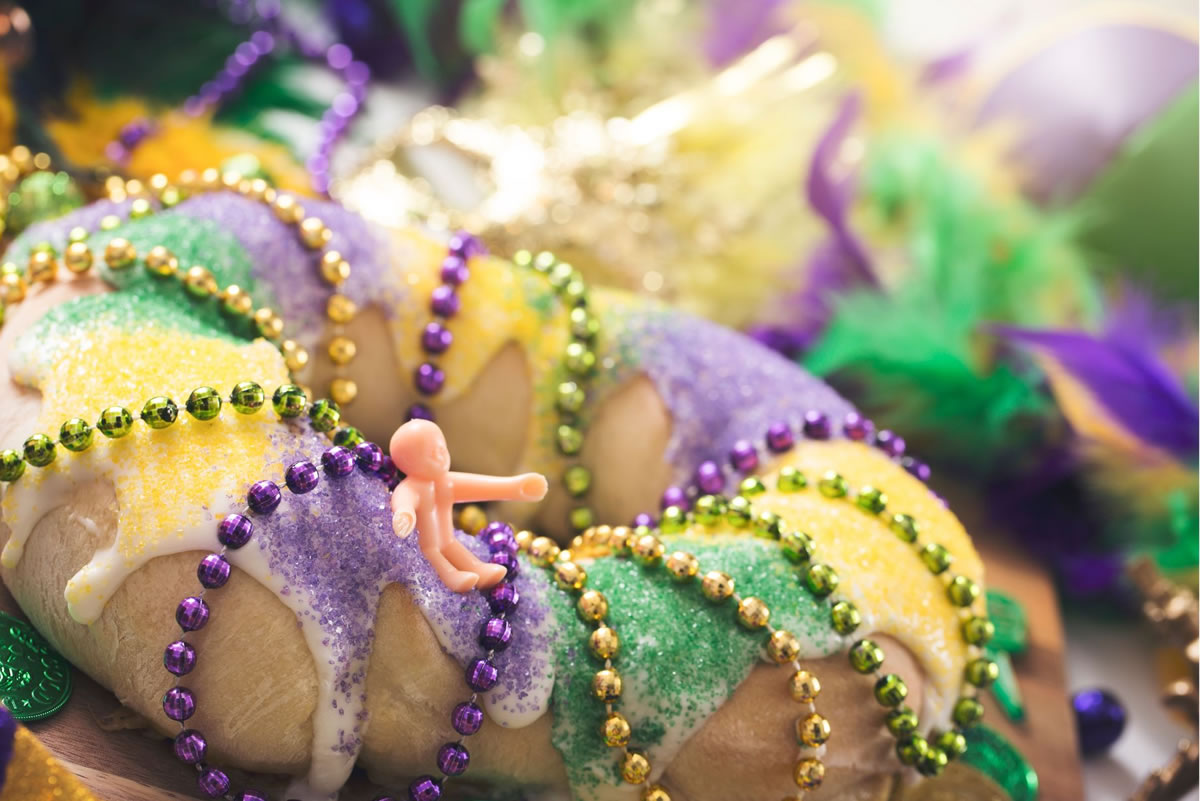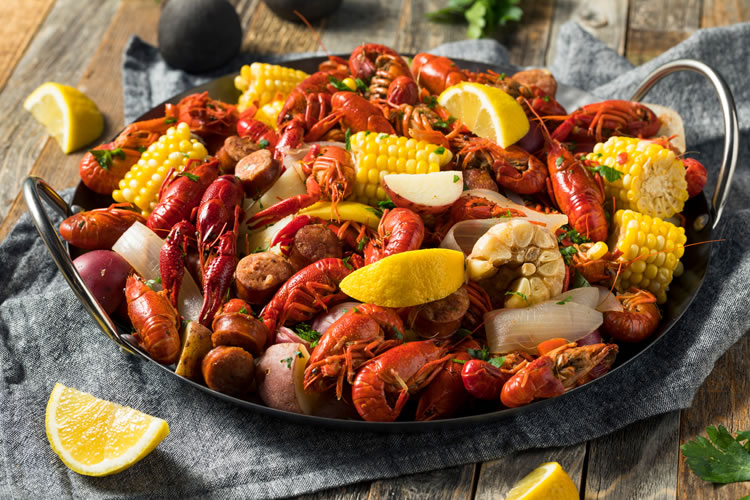With sayings like “Confetti in my hair, cocktail in my hand,” and “We don’t hide crazy, we parade it down the street,” there’s no celebration quite like a Mardi Gras celebration.
One of the most anticipated events each year, most of us know Mardi Gras as a traditional Winter festival complete with parades, fantastic costumes, whimsical floats, dancing, drinking, food, and revelry at its finest. There are also beads. Lots and lots of beads.
With a rich history and wild celebrations across the globe, here are interesting things you may not have known about Mardi Gras!
First: What is Mardi Gras?
Mardi Gras is a Christian holiday with origins dating back to medieval Europe.
Translated from French as “Fat Tuesday,” Mardi Gras is officially celebrated the day before the kick-off of Lent the following day on Ash Wednesday.
Mardi Gras marks a final day of indulgence though the season of Lent which spans the 40 days leading up to Easter which was designated a time for reflection, repentance, and strict fasting practices.
Mardi Gras (Fat Tuesday), and the weeks leading up to it allowed church goers a final day to have one last celebratory final feast and clear the pantry of rich foods like meat, eggs butter, milk, lard, and cheese that were forbidden during Lent.
The Celebration of Mardi Gras Lasts Several Weeks
The weeks leading up to Mardi Gras are known as carnival, which is a word derived from Latin “carne vale” meaning “farewell to meat.”
While modern fasting rules of the churches have eased, requiring only abstaining from meat on Ash Wednesday and Fridays during lent, the joy and revelry of Mardi Gras is celebrated around the world to this day.
Many cities around the world have a variety of events, parades, and balls throughout the carnival season leading up to Mardi Gras.
Carnival Season Starts on the 12th Day of Christmas
Often thought to come before, the 12th Day of Christmas falls on January 5 (and sometimes January 6 depending on location) is the kick-off of the Carnival season and festivities leading up to Mardi Gras.
This day known as Epiphany celebrates the day the three kings (the Magi), visited the baby Jesus in Bethlehem as well as Jesus’ baptism and God manifesting through the baby Jesus.
Mardi Gras’ Customs Are Tied to Pagan Traditions That Are Thousands of Years Old
Many Mardi Gras traditions can be traced back thousands of years to pagan celebrations of spring and fertility, including the Roman festivals of Saturnalia (in honor of Saturn god of wealth, abundance, and agriculture) and Lupercalia (a day to promote fertility) whose earliest known recording is from the 3rd century BCE.
The Tradition of Wearing Masks and Costumes Date Back to the 13th Century Venice
Mardi Gras has been a time to let loose. And centuries ago it was also the only time of year the upper and lower classes were allowed to socialize together. That that didn’t mean you wanted your friends, family, and neighbors to know what kind of mischief you were getting into and with whom.
That’s why in the 13th century revelers in Venice began wearing masks and costumes to hide their identities as they took part in the often salacious festivities. The masks also added an element of artistic flair, mystery and intrigue to the parties. Mask making became an art by the 15 century, which Venice is still known for to this day.
Wearing beautiful and ornate decorative masks caught on throughout the world and is still a popular Mardi Gras tradition.
New Orleans Wasn’t The First City in the U.S. to Celebrate Mardi Gras
The first Mardi Gras celebration in the U.S. was held in the port city of Mobile, Alabama in 1703 by the original French settlers.
Mobile continues to have one of the most popular and family-friendly Mardi Gras celebrations in the U.S. with a combination of parties, balls, and parades.
You can also visit the Mobile Carnival Museum to learn all about the “birthplace of Mardi Gras” in the U.S.
Mardi Gras Doesn’t Always Fall on the Same Date
Mardi Gras always falls on the Tuesday 47 days before Easter. But since Easter’s date changes year to year so does the date for Mardi Gras.
Easter is determined as the first Sunday after the full moon following the first day of spring (20th of March 20th).
Here are future dates for Mardi Gras:
- 2023 – February 21
- 2024 – February 13
- 2025 – March 4
- 2026 – February 17
- 2027 – February 9
Be sure to mark your calendar if you’re planning on celebrating or traveling for any events.
Mardi Gras is Celebrated Around the U.S in Cities With Strong French, Spanish, and Catholic Influences
In addition to New Orleans, LA, and Mobile, AL other cities that host grand Mardi Gras festivities in the United State include” Biloxi, Mississippi, Pensacola, Florida, Tampa Florida, Lafayette, Louisiana, Baton Rouge, Louisiana, San Diego, California and Galveston, Texas.
St. Louis Has the Second Largest Mardi Gras celebration in the United States
Even though their celebrations only started in the 1980s, St. Louis, Missouri, which was founded in 1764 by French fur traders, now claims the runner up position to New Orleans as the second largest Mardi Gras celebration in the United States.
Mardi Gras and Carnival Season Celebrations are Held Throughout the World and Go By Many Names
Mardi Gras celebrations are held around the world where Roman Catholicism is popular and French, Spanish, and Anglican ancestry is dominant.
Mardi Gras season celebrations around the world go by many names including:
- Shrove Tuesday (Pancake Day) in the U.K.
- Fettisdagen in Sweden
- Martedi Grasso in Italy
- J’Ouvert in Trinidad and Tobago
- Martes de Carnaval in Mexico
- Karneval in Germany
- Carnival in Brazil
- Quebec Winter Carnival in Canada
- Maslenitsa in Russia
The Mardi Gras Colors of Purple, Green, and Gold are Symbolic
In 1872, the Rex Organization was a group formed and tasked as a welcoming and entertaining committee to the royal Grand Duke Alexei Alexandrovich of Russia who was visiting New Orleans during the carnival season that year.
As part of the festivities, they planned the first fun and friendly daytime parade for all in New Orleans to enjoy as nighttime processions were already common.
Gold, green and purple were selected by the group to prepare the town for the festivities and instructed local newspapers to print instructions that all balconies be adorned in purple, green, and gold.
The colors stuck and the color palette was made official a few decades later during a Mardi Gras parade themed “The Symbolism of Colors.”
The colors are used to this day. And while it is debated why these particular colors were chosen it is believed that:
- purple signifies justice
- green means faith
- gold is a symbol of power
These colors were also often used on flags and the crests of royal families throughout time.
Over 70 Social Organizations Called “Krewes” take part in and Organize the Mardi Gras Festivities Each Year.
Each Krewe is unique, each with its own series of parade floats and costumes, customs, events, balls, cultural affiliations, and Mardi Gras histories.
Every year each krewe selects a new theme to design their floats and costumes around.
Each Year a Mardi Gras “King of Carnival” is Chosen
A coveted position, the annually selected monarch receives a symbolic golden key to the city and then decrees that it’s time for the city to shut down and celebrate. This tradition started with the Rex Organization.
Treats Tossed from the Mardi Gras Floats During the Parades are Called “Throws.” Yelling “throw me something mister” is how you get some.
A favorite experience during the Mardi Gras parades is getting tossed trinkets and treats from the riders of floats. While beads are one of the most popular Mardi Gras throws to collect, you can also catch other prizes like doubloons, plastic cups, stuffed animals, toys, and more.
Some of the most sought-after trinkets are the signature throws hand-crafted by the “krewes.”
The krewe Zulu inspired this tradition of creating signature throws when they began handing out coconuts in New Orleans in 1910. Undecorated at first, they later embellished the coconuts with decorations and designs.
They were a hit, and the practice inspired other krewes to create their own hand-decorated signature throws.
Today collectible throws include decked-out shoes by Krewe of Muses, purses from Mystic Krewe of Nyx, sunglasses by Krewe of Iris, genie lamps from Krewe of Alla, and many more.
Mask Wearing is Illegal in New Orleans… Except at Mardi Gras
A custom borrowed from the Carnival of Venice, the tradition of wearing masks at Mardi Gras was not only meant to be a fun way to dress up but to take part in celebrations regardless of class while protecting their reputations. Today, the mask-wearing tradition continues.
While wearing a mask is illegal throughout the year in New Orleans, things change during Mardi Gras.
Not wearing a mask while on a Mardi Gras parade float is considered breaking the law.
Mardi Gras in New Orleans Was Almost Cancelled For Good.
In fact, at one point, city leaders were ready to be done with Mardi Gras once and for all canceled because it often led to outrageous and destructive behavior.
In 1857, things turned around, when the Mistik Krewe of Comus took on replacing the original chaotic and depraved Mardi Gras celebrations with a more composed and organized event marked by lavish balls and parades instead.
It was these more tamed and elevated celebrations that saved Mardi Gras and established New Orleans as the Mardi Gras capital of the country.
‘The Greasing of the Poles’ is one of the Strangest Mardi Gras Traditions in New Orleans
Over five decades ago the Sonesta Hotel New Orleans (300 Bourbon Street) started smearing the poles that building support the front of its building with petroleum jelly to keep rowdy parade-goers from climbing up the hotel’s poles and then onto their balconies.
That practice is now a yearly tradition and grand event with celebrities, music, and international fame. It even marks the official commencement of the French Quarter’s Mardi Gras weekend festivities.
The King Cake is the Official Dessert of Mardi Gras and Carnival Season
Shaped in a ring and sometimes braided to resemble a King’s crown, king cakes are iced, and decorated in yellow, green, and purple sanding sugars.
This beloved rich cake first brought to New Orleans from France in 1870 is a cross between sweet bread and a French pastry. And each cake comes with a prize baked inside!
Inside King Cake is a trinket (usually a tiny baby) that represents Jesus, luck and prosperity. Whoever gets the “baby” in their slice of King Cake is named “King” or “Queen” for the day and is expected to bring the King Cake to the next event or host the next party.
Edible things such as beans, pecans, or peas have also been used as the “prize” to find.
Try making your own with this authentic recipe.
Mobile, Alabama Was the First City to Toss Moon Pies to Parade Goers
A tradition that started during a parade in 1967, you can now find these yummy Southern-born treats at the New Orleans Mardi Gras festivities as well.
The Pennsylvania Dutch Have Their Own Delicious Mardi Gras Tradition
The Pennsylvania Dutch call Mardi Gras Fastnacht which is German for “fast night.” And each year they prepare a special fried donut called a Fastnacht that is made and enjoyed on the day.
There are many different recipes for Fastnacht, but one popular version is made with a yeast-raised dough that is blended with mashed potatoes.
Try this authentic Pennsylvania Dutch Fastnacht recipe.
Looking For The Best Mardi Gras Recipes?
We’ve got you covered! Here’s 19 Easy Cajun and Creole Recipes to Celebrate Mardi Gras. We think you’ll love these popular New Orleans inspired dishes so much that you’ll want to celebrate with these Mardi Gras recipes all year long!
Better Living uses affiliate links. If you make a purchase through them, we may receive a small commission (for which we are deeply grateful) at no cost to you.

